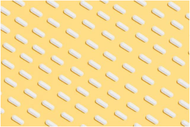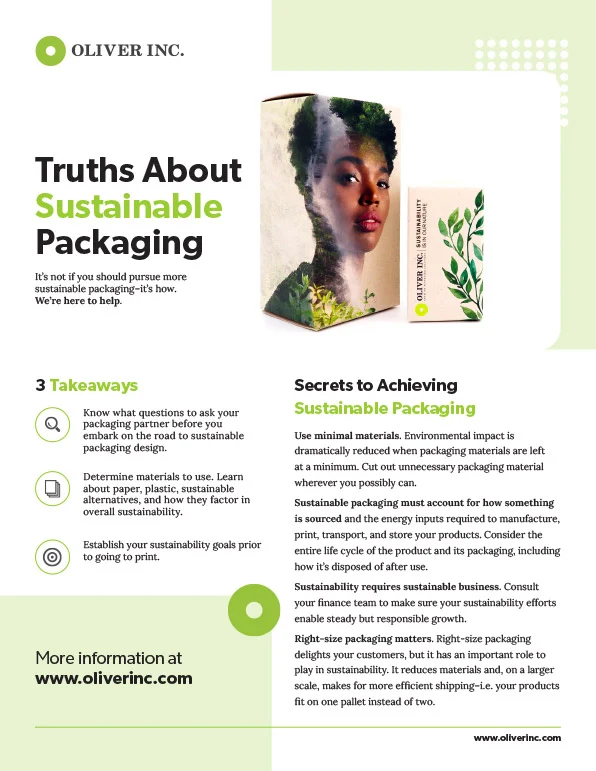The Hallmarks of Good Pharmaceutical Packaging Design
Posted by Oliver Inc. on 23rd Sep 2025
When it comes to pharmaceuticals, packaging is a lot more than just a box or a bottle. It’s the first layer of protection for these products, the carrier of critical information, and the first thing that patients and healthcare providers interact with. That’s a lot of responsibility, which is why good pharmaceutical packaging design is so important. But what makes it good, exactly? Read on below for the hallmarks of smart, effective, and reliable design in this particular field:
Safety and Security Always Come First
The primary job of pharmaceutical packaging is to protect its contents – and not just in terms of keeping tablets dry or preventing glass vials from breaking. It should guard against contamination, light, moisture, and – perhaps most importantly – tampering.
A well-designed package, therefore, will include tamper-evident features that show if someone has tried to interfere with the product. These can include seals that break on opening or bands that can’t be replaced. They might seem like small touches at first, but they add a very important layer of trust for both patients and healthcare providers.
There’s also child-resistant packaging. Anyone with little ones at home knows how curious (and fast!) kids can be. Caps that require a push-and-turn motion or blisters that need more dexterity than tiny fingers can manage are essential safeguards.
Easy to Use, Hard to Mess Up
Pharmaceutical packaging also needs to be user-friendly – it’s a huge part of the puzzle, in fact. The best kind isn’t merely functional, it’s intuitive. A patient shouldn’t need a manual to open a bottle or read a dosage.
Good packaging design thinks ahead and takes the people who use it into consideration. An elderly patient suffering from arthritis, for example, may struggle to open bottles with tight caps or read an unclear label. Smart design steps in here with features like easy-to-grip lids, bold fonts, and clear instructions that don’t require a magnifying glass.
Then there’s portion control. Packaging can help guide the correct dosage, especially with unit-dose formats like blister packs. This helps prevent medication errors, which are all too common when pills are poured loosely into a bottle.
Crystal Clear Communication
When you’re dealing with medications and other pharmaceuticals, what’s written on the package is just as important as what lies within. Clear, readable, and honest labeling doesn’t just build confidence; it also reduces the chances of misuse. It should communicate the dosage, usage instructions, potential side effects, expiry dates, and storage guidelines – all without overwhelming the end user.
Design plays a very important role here. A good layout ensures that critical information stands out. Color coding is often used to differentiate drug types, strengths, or time-of-day instructions. Using the color green to communicate that a certain medication is supposed to be taken during the day, for example, and then blue for night, might seem like small touches at first, but it makes things much easier to remember for the patient.
Multilingual packaging is also essential in diverse communities. The more understandable the label, the more likely it is that the medication will be used correctly.
Standing Out Without Compromising Standards
Brand recognition still matters, of course – even in pharmaceuticals. The look and feel of the packaging of a certain medication can influence how it’s perceived. Design that is sleek and professional conveys trust and credibility; conversely, medication contained in clunky or outdated packaging can make a user feel skeptical about taking it.
There is, however, a fine line here. Packaging needs to be eye-catching, yes, but it shouldn’t be misleading or too flashy. You’re still dealing with pharmaceuticals here, which is a serious matter. You can’t (and shouldn’t) sell medicine in the same way that you would a soft drink. The balance between branding and medical integrity may be delicate, but it is achievable with the right choices.
Designers often work closely with regulatory teams to ensure compliance with guidelines, while still giving the product a distinct identity. Consistent colors, fonts, and icons help patients recognize the brand, which is especially helpful for those on long-term treatments.
Thinking Green: Sustainability in Pharmaceutical Packaging
The pharmaceutical industry, like all others, is increasingly embracing sustainability. Good design, therefore, now also considers the environmental footprint of packaging. That means using recyclable materials, reducing unnecessary bulk, and exploring biodegradable options wherever possible.
Being eco-friendly isn’t the only goal here. Sustainable packaging often leads to cost savings and efficiency improvements too. Smaller, lighter packages take up less space during transport, reducing emissions and storage needs. Patients are also becoming more conscious of what they throw away. Offering eco-smart options can actually enhance brand loyalty – another bonus of thoughtful design.
Pharmaceutical packaging design is a unique blend of science, safety, and style. It shouldn’t merely look good. It should protect, inform, simplify, and reassure.
When it comes to packaging for your pharmaceutical products, you can count on our extensive experience here at Oliver Inc. Fill out the contact form found on this page now to work with us.






